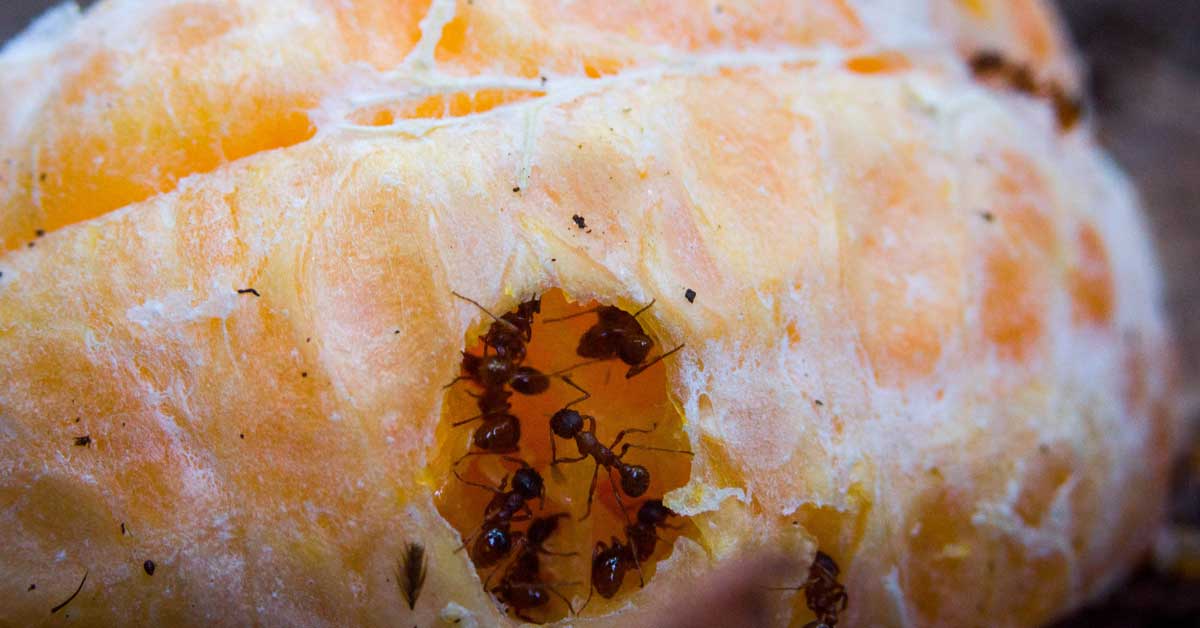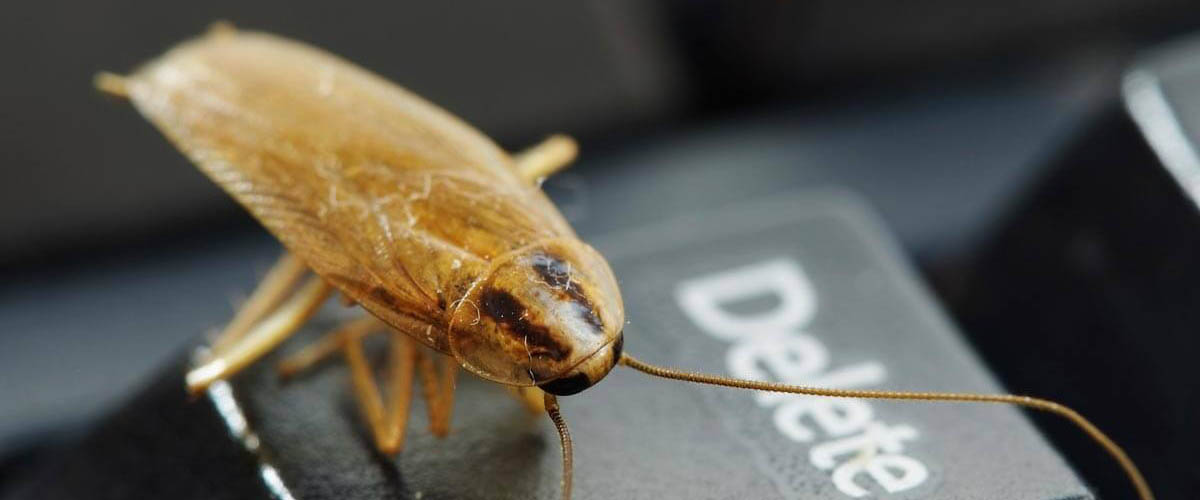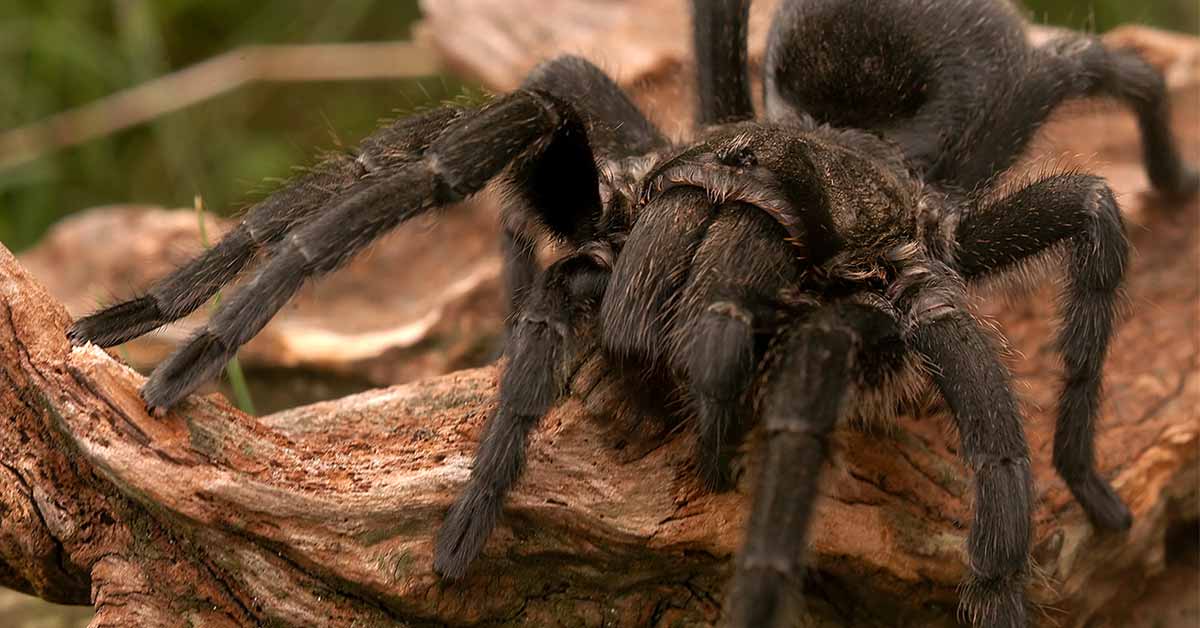Ant Damage and Disruption: Clues to Your Culprits
One of the most prevalent insects in the environment, ants are also leading household pests in the United States. Outdoor populations often grow unnoticed until weather or other factors drive ants inside homes in search of food and water. Some forage indoors and return to outdoor nests, but others set up residence inside. Ants vary significantly in color and size, and have different food preferences, from proteins to fats and sweets.
The damage and disruption that result from ants can range from serious structural damage to food contamination and embarrassment. Knowing more about the ant behind your specific problem can help you treat ant infestations confidently. The following ants are some of the most common offenders in households across the country:
CARPENTER ANTS
One of the largest common household ants, carpenter ants are also one of the most significant wood-damaging insect pests in the U.S. While most ants don't cause lasting structural damage, carpenter ants do. They excavate moist, rotting structural wood and create large, smooth-walled galleries that can threaten your home's integrity.
Unlike termites, carpenter ants don't eat the wood they excavate. Inside your home, they feed on proteins, such as meats, cheeses and other insects, as well as sweets. Size and color vary with the species, but large, dark worker ants typically measure about 1/2-inch long.1,2 Homeowners often mistake winged, reproductive carpenter ants for termites, but ants and termites are easy to tell apart once you know what to look for.
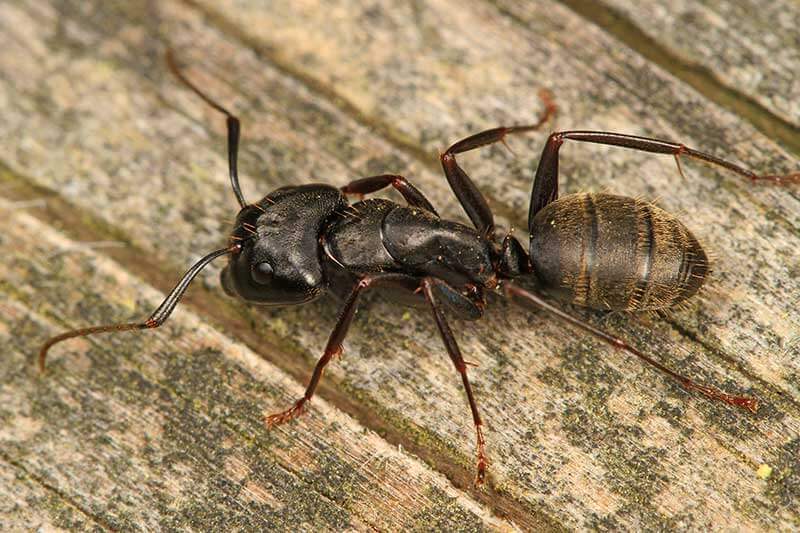
PHARAOH ANTS
Native to tropical areas, Pharaoh ants regularly nest indoors to avoid cold temperatures that would end their lives. They wreak havoc in homes and large dwellings, such as apartment buildings, hospitals, care facilities and hotels, by establishing nests in dark, warm areas near moisture sources. While they don't damage structures, Pharaoh ants can carry organisms such as bacteria that cause disease.
Pharaoh ant foods and habits are varied. They eat sweets, grease and other fats, as well as non-food products ranging from soap and toothpaste to shoe polish. Known to make their way into sealed hospital dressing packs, these pests have even been found in intravenous solutions and surgical wounds.1 These honey-yellow ants have slightly darker golden-brown abdomens and typically measure about 1/16-inch long.1
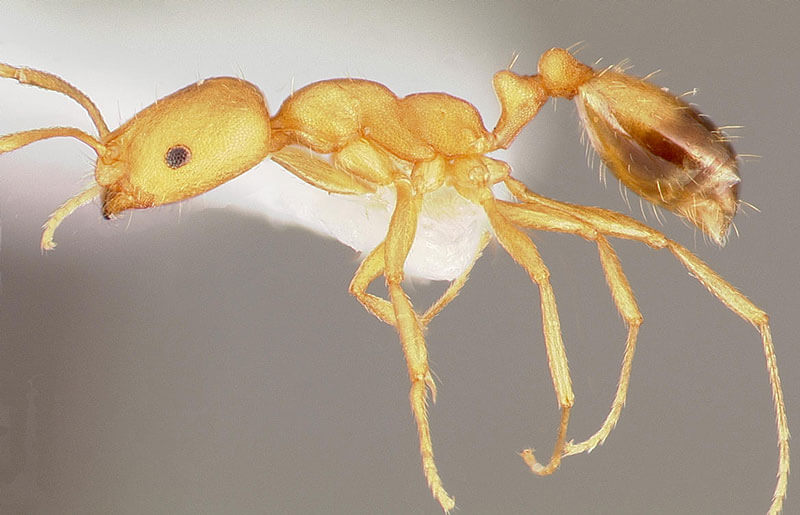
Pharaoh ants can carry disease from place to place on their bodies.
ACROBAT ANTS
Acrobat ants take their name from an unusual habit of raising their abdomens high in the air toward their heads when disturbed. They also deliver painful, but generally harmless, bites and emit foul odors when crushed.1,2 Acrobat ants nest under wood debris or in moist, decaying wood outdoors. They favor abandoned carpenter ant or termite galleries in homes. In some cases, they excavate and enlarge galleries, worsening structural damage in the process.
In nature, acrobat ants feed on nectar, plant sap, insects, and aphid-produced honeydew. Inside your home, they seek out sweets, meats and other proteins. Less than 1/8-inch long, these brownish-yellow to black ants have distinctive heart-shaped abdomens when viewed from above. Acrobats ants enter homes from overhanging branches and electrical and phone lines, often damaging line insulation and shorting electrical circuits in the process.4
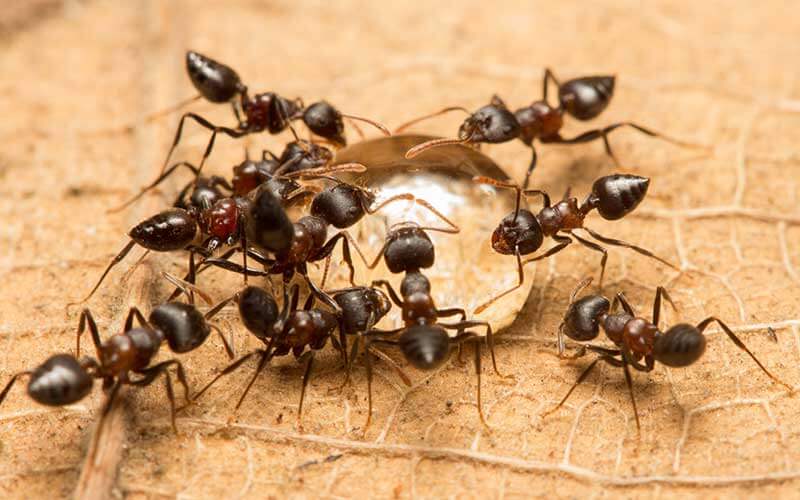
PAVEMENT ANTS
Many homeowners are familiar with miniature ant mounds rising up between cracks in driveways and sidewalks. Those small mounds are entrances to pavement ant nests. These ants commonly nest beneath gravel, pavement or similar surfaces, including concrete slab foundations. During winter, they work their way through cracks and crevices in concrete or masonry and seek out warm, heated areas inside homes.
When nests are disturbed, pavement ants scatter and create small, new secondary colonies in a process known as “budding." Outdoors, they feed on plant roots, seeds and honeydew from aphids and similar plant pests. Indoors, they consistently prefer fats and grease. When raising young, they also target proteins, such as meats and pet foods. At other times, they seek out sweets.3 Pavement ants typically measure 1/8 inch or less, and vary in color from light reddish-brown to black.2
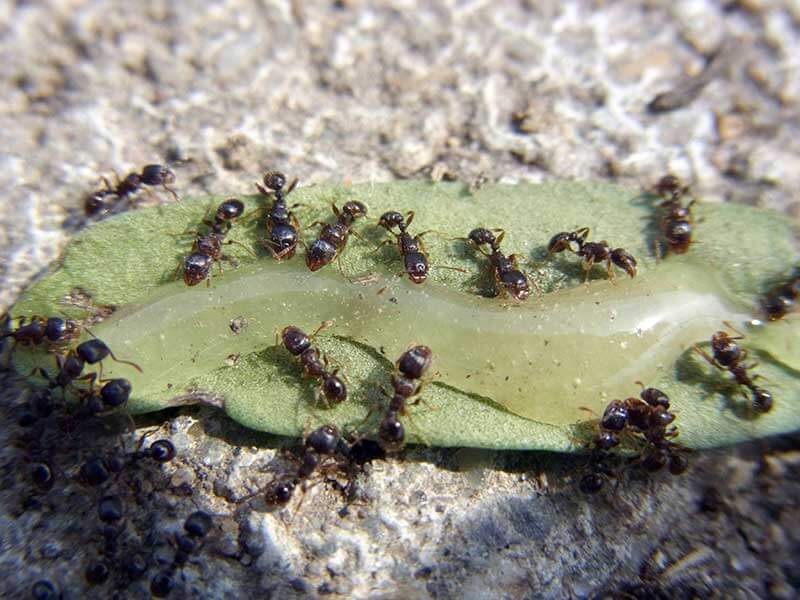
Pavement ant food preferences shift with the seasons.
ARGENTINE ANTS
Southern homeowners are often hard hit by Argentine ant infestations. These South American insects aggressively displace other types of ants, including fire ants, entirely. Rather than nest in a single site, Argentine ants develop networks of small, cooperative nesting sites that, combined, become extremely large, extended colonies.3 Inside your home, their vast numbers can be overwhelming.
Outdoors, Argentine ants nest in soil beneath rocks, mulch and debris. Indoors, you'll find them everywhere — in plants, under carpets and wherever moisture is present. Their food choices are very general; whatever your family eats, they'll eat, too. They are also capable of spreading organisms such as bacteria that cause disease. Argentine ants are brown, less than 1/12-inch long, and emit an unpleasant, musty odor when crushed. They will bite, but bites are generally not painful.3
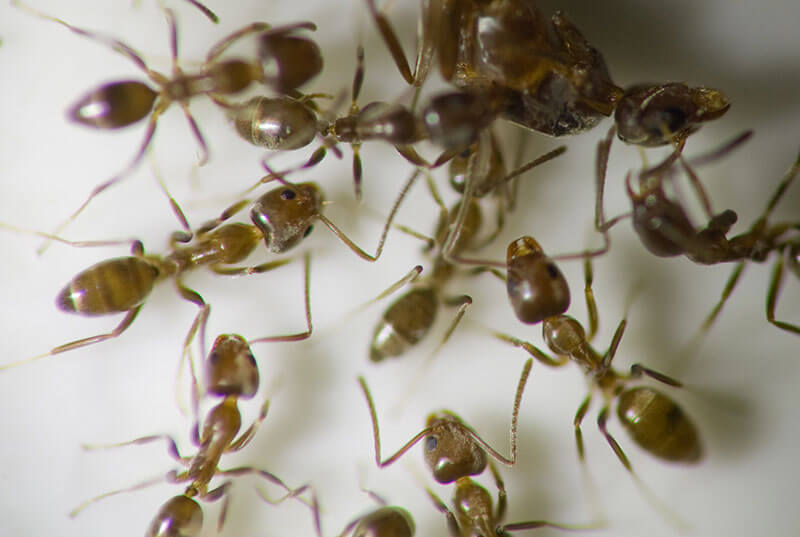
Argentine ants can appear in very large numbers.
ODOROUS HOUSE ANTS
Extremely common in kitchens and food storage areas, odorous house ants are general nuisances. When crushed, these ants produce a very unpleasant odor that's frequently compared to rotten coconuts. They nest outdoors under stones, rotted wood, landscape mulch and similar spots. Inside homes, odorous house ants nest in wall spaces and seek out rotting wood, such as moisture-damaged window frames. However, they don't cause structural damage themselves.2
Dark brown to black in color, odorous house ants grow to about 1/10-inch long. Though they bite, their small size ensures bites are relatively painless.3 Favorite indoor targets include meats, vegetables, fruits and sweets, including sugar, honey, syrups and sweetened cereals. Pet food storage bins, garbage cans and kitchen pantries warrant extra vigilance against these prevalent pests.
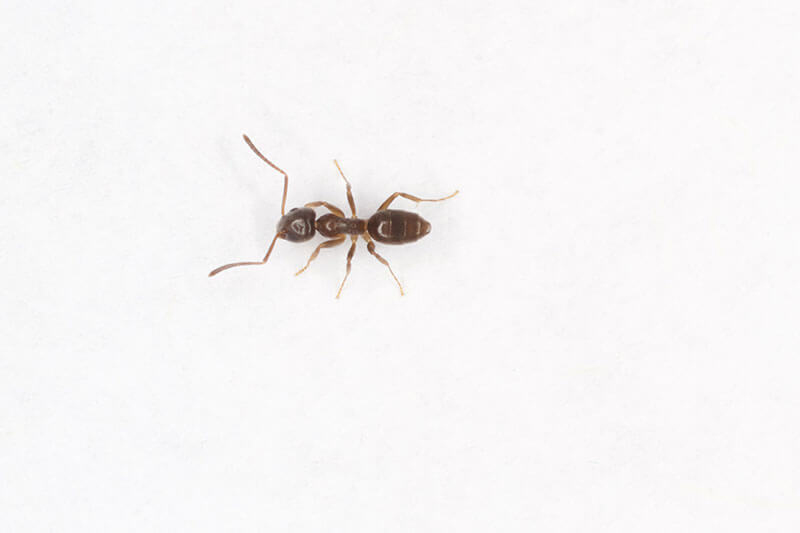
Odorous house ants emit a rotten smell when crushed.
THIEF ANTS
Also known as grease ants, thief ants are among the smallest common household ants, but they can be major headaches when they invade your home. They earn their common name from a habit of entering nests of other ants and stealing food, which can include the other ants' offspring. In nature, thief ants nest in soil and hollowed wood. In your home, they inhabit areas such as cupboards, kitchen sinks and drains where moisture and greasy oils accumulate.1
Thief ants are shiny, yellow-bronze in color and typically measure just 1/32-inch in length. At this size, even sealed food containers are at risk. Thief ants seek out fats, such as grease and oil, and proteins, including meats, cheeses and nut butters. Sweets are only occasional targets. These tiny invaders curl up when dying, confirming their identity.2
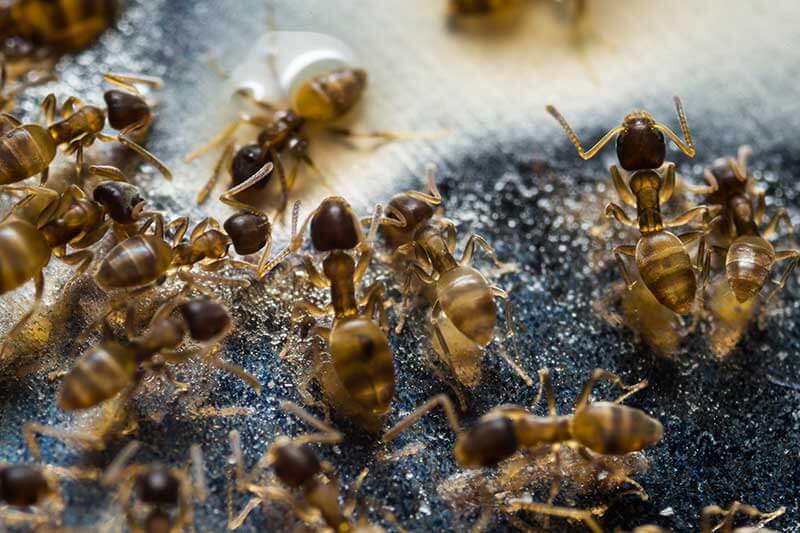
Tiny thief ants congregate where greasy foods and moisture meet.
EFFECTIVE ANT CONTROL
When ants of any kind strike in and around your home, prompt and effective treatment restores order and peace of mind. Not all pest products treat all ants, so read labels carefully. If you're uncertain of an ant's identity, your local cooperative extension agent can help identify the pest involved. Amdro Ant Killer for Outdoor Home Perimeter controls 25 ant species, including all of these common culprits.
Amdro is a registered trademark of Central Garden & Pet Company.
Sources:
1. Shetlar, D., Bloetscher, B. and Andon, J., “Ants In and Around the Home," Ohio State University Extension.
2. Hahn, J. and Pelitteri, P., “What to Do About Household Ants," University of Minnesota Extension.
3. Layton, B. and MacGown, J., “Control of Argentine Ants and Odorous House Ants in the Home," Mississippi State University Extension.
4. Nauman, J.S., Zungoli, P.A. and Benson, E.P., “Acrobat Ants," Clemson Cooperative Extension.
Photo by Judy Gallagher is licensed under a Creative Commons Attribution 2.0 License
Photo by AntWeb is licensed under a Creative Commons Attribution 4.0 License
Photo by Fractality is licensed under a Creative Commons Attribution 2.0 License
Photo by Matthew Townsend is licensed under a Creative Commons Attribution 2.0 License
Photo by Brian Gatwicke is licensed under a Creative Commons Attribution 2.0 License

